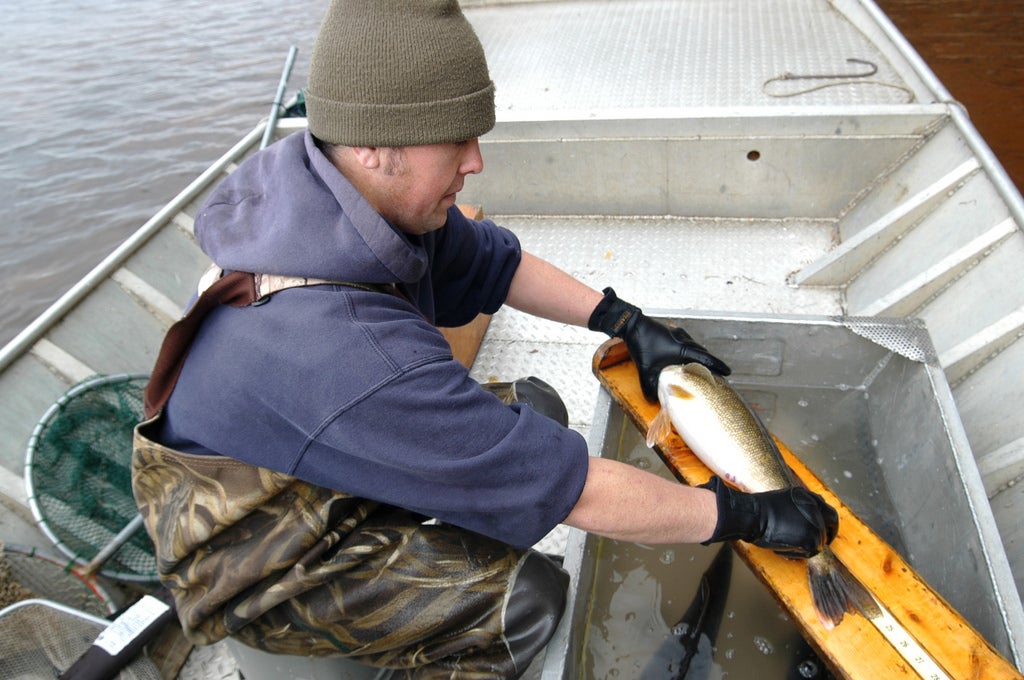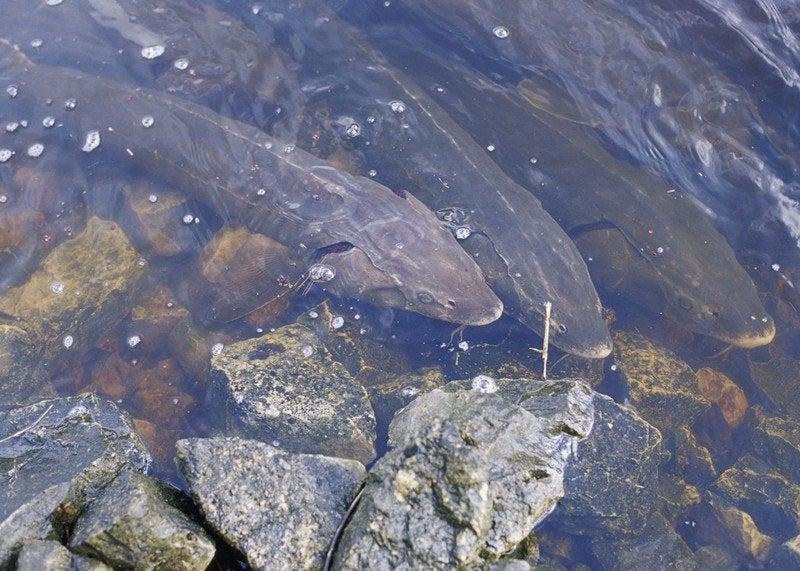Anglers aren’t the only ones catching something out in Wisconsin waters. University of Wisconsin researchers have detected almost 20 viruses in wild sport fish, including a distant relative of coronavirus that’s usually associated with birds.
Researchers at UW-Madison say the discovery is part of a first-of-its-kind study in North America to survey healthy wild fish for viruses. They analyzed 103 blood samples from five fish species that included brown trout, lake sturgeon, northern pike, bluegill and walleye. The results were recently published in the journal Pathogens.
The findings revealed 19 viruses that included 17 unknown to science before researchers discovered them, according to Tony Goldberg, an epidemiology professor at the university’s School of Veterinary Medicine. He said the findings underscore that “fish get sick, too.”
“Walleye in our study have a coronavirus that is a distant relative of the coronaviruses we all now know…from the pandemic,” Goldberg said.

Goldberg said it’s the first coronavirus associated with fish. He noted a poultry disease called infectious bronchitis is caused by a relative of the coronavirus found in walleye. The virus was found in 11 out of 15 walleyes sampled by the Wisconsin Department of Natural Resources. The study’s findings also revealed viruses that are distant relatives of rubella and Hepatitis B.
Even so, he stressed there’s no threat to human health or anglers.
“These are fish viruses, and there are no known viruses of fish that can affect people because we’re just too far from fish evolutionarily,” Goldberg said. “People don’t have to worry about eating fish because they might be infected with one of these viruses.”
Stay informed on the latest news
Sign up for WPR’s email newsletter.
Findings could aid fish management decisions
The work builds on previous research conducted by Goldberg on the fish virus viral hemorrhagic septicemia, or VHS. The virus was introduced to fish in the Midwest during the early 2000s, which evolved into a strain that caused massive fish kills in Wisconsin. The DNR collected blood samples from fish across the state for that research, which were then analyzed for viruses in the latest study.
The findings could help the DNR and fishery managers who routinely test fish at hatcheries. Goldberg said it can be challenging to handle the discovery of a new virus in fish that are set to be released into state waterways.
“Do you put the fish out there anyway, knowing that they have something? Do you hold them indefinitely for some researcher to come and figure out what the virus is? Do you kill them?” Goldberg said. “It’s a common problem.”
Among species tested, lake sturgeon had the highest rate of infection with nearly 97 percent of samples containing any virus. Around 71 percent of walleye had viruses, and brown trout had the lowest infection rate with around 6 percent of samples that contained viruses.
Goldberg said it’s tempting to think lake sturgeon — a fish that first appeared when dinosaurs walked the Earth — have accumulated several viruses over time. As for brown trout, he noted such non-native species are known to gain a foothold and spread because they don’t encounter many pathogens that can infect them. Even so, it’s unclear why certain species had higher or lower rates of infection.

Research will expand fish testing in newly discovered viruses
The next step in their research is to sample a larger set of fish using tests designed by the U.S. Fish and Wildlife Service to detect the 17 new viruses.
Eric Leis, fish biologist with the agency’s La Crosse Fish Health Center, said it developed a test that’s essentially the same fast and inexpensive polymerase chain reaction, or PCR, technique used to test for COVID-19.
“We can use those (tests) to assess basically the intensity of the infection, as well as determine the overall prevalence in the state,” Leis said.
The goal of the research is to collect baseline data to determine what effect, if any, the viruses may have on the health of fish. Leis said it’s important to know where viruses are found as part of recovery efforts for fish like lake sturgeon.
“If there’s a population that doesn’t have any of these viruses, we would select from that population for restoration efforts,” Leis said.
The detection of viruses among fish in certain areas may also be used to investigate the cause of any fish kills. However, some viruses that have been linked to fish kills have also been found in healthy fish throughout the state.
“Even though they’re infected with a virus, it doesn’t necessarily mean that it would cause disease either,” Leis said. “There’s some times where fish are simply carriers. They’re not the actual hosts that develop disease.”
Goldberg added it’s rare that viruses are the sole cause of fish kills.
“There’s very strong evidence that stressful environments make fish unhealthy and make them susceptible to viruses,” Goldberg said. “I wouldn’t be surprised if some of the viruses we found, or some we haven’t found yet, pop up in the future when things like climate change get worse or we have water quality declines for any reason.”
Wisconsin Public Radio, © Copyright 2024, Board of Regents of the University of Wisconsin System and Wisconsin Educational Communications Board.
"fish" - Google News
April 04, 2024 at 05:00PM
https://ift.tt/XsZ4zkY
'Fish get sick, too': Study finds relatives of coronavirus and other pathogens in fish - WPR
"fish" - Google News
https://ift.tt/JLMyr5f
https://ift.tt/3WmZ4Ga
Bagikan Berita Ini














0 Response to "'Fish get sick, too': Study finds relatives of coronavirus and other pathogens in fish - WPR"
Post a Comment